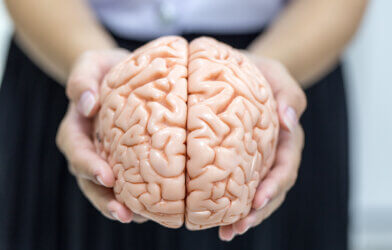Can light therapy combat chronic stress? An international team of researchers believe so. A new study, published in the Journal of Affective Disorders, suggests that a novel light-based therapy called photobiomodulation (PBM) could hold the key for treatment.
Researchers from the University of Barcelona and other institutions in Spain and France have found that simultaneously applying PBM to the brain and gut may help alleviate cognitive symptoms and brain changes associated with chronic stress in mice. The results provide intriguing insights into the potential of this innovative treatment approach.
“This is one of the most innovative scientific contributions of the study: to co-stimulate in a coordinated way the brain and the gut at the same time, i.e. the gut-brain axis. Today, the area of research into the gut-brain axis is generating great scientific interest and is a very promising field for the possible treatment of diseases of the nervous system”, says study lead author Albert Giralt, professor in the Faculty of Medicine and Health Sciences and the Institute of Neurosciences of the University of Barcelona, in a media release.
What exactly is photobiomodulation? In simple terms, it’s the use of light to stimulate and regulate biological functions in a non-invasive way. Researchers have been exploring PBM as a treatment for various neurological disorders, but this is one of the first studies to target both the brain and the gut microbiome simultaneously.
The gut microbiome refers to the trillions of microorganisms that reside in our digestive tract. Emerging research suggests that an imbalance in the gut microbiome, known as dysbiosis, may contribute to the development of stress-related psychiatric disorders like MDD. This has led scientists to investigate ways to modulate the gut-brain axis as a potential therapeutic strategy.
“The new therapeutic approach focuses on this now rediscovered scenario of intervention and manipulation of the gut-brain axis to address neurological and psychiatric disorders,” explains Giralt. “Photobiomodulation is a non-invasive technology that is very well tolerated by patients and lacks the side effects of pharmacological treatments. In addition, this advance could also be useful in the treatment of pathologies without clear or incomplete medical coverage, such as the treatment-resistant subtype of depression.”
In the current study, researchers subjected mice to a chronic stress protocol for 28 days to induce a depressive-like state. They then treated the mice with PBM, applying light to either the head, the abdomen (where the gut microbiome is primarily located), or both sites simultaneously for six minutes per day over three weeks.
The results were promising. While PBM did not appear to affect anxiety or behavioral despair in the mice, it did improve their performance on cognitive tasks involving spatial memory and working memory. This cognitive boost was accompanied by a restoration of dendritic spine density in the hippocampus, a brain region critical for learning and memory that is often impaired in MDD.
The beneficial effects on cognition and hippocampal structure were most pronounced in mice that received PBM to both the head and abdomen, suggesting a synergistic effect of targeting the brain and gut simultaneously. Researchers hypothesize that PBM may exert its effects by modulating levels of a protein called Sirtuin 1 (SIRT1) in the hippocampus, which was found to be elevated after chronic stress but normalized by the light therapy.
But the benefits didn’t stop there. PBM was also found to modulate the composition of the gut microbiome in stressed mice, preventing some of the alterations typically induced by chronic stress. In particular, mice treated with PBM showed a correlation between levels of a beneficial bacteria called Roseburia, a butyrate producer, and improved behavioral outcomes. This finding aligns with previous research linking Roseburia to remission of MDD in humans undergoing antidepressant treatment.
Finally, the study revealed that PBM could help tamp down neuroinflammation in the hippocampus of stressed mice. Chronic stress is known to activate microglia, the resident immune cells of the brain, leading to inflammatory processes that may contribute to the development of depressive symptoms. PBM appeared to reduce this microglial activation and associated inflammatory markers.
While the molecular mechanisms underlying the therapeutic effects of PBM are not yet fully understood, this study provides compelling evidence that targeting both the brain and the gut with light therapy could be a promising approach for mitigating the cognitive and neurobiological consequences of chronic stress.
Much more research is needed to determine if these findings will translate to humans and to optimize treatment protocols. But as we continue to grapple with the mental health toll of stress in our fast-paced, high-pressure world, innovative non-invasive therapies like PBM offer a glimmer of hope on the horizon. By shining a light on the complex interplay between the brain, gut, and immune system, studies like this one are paving the way for new strategies to promote resilience in the face of stress.












